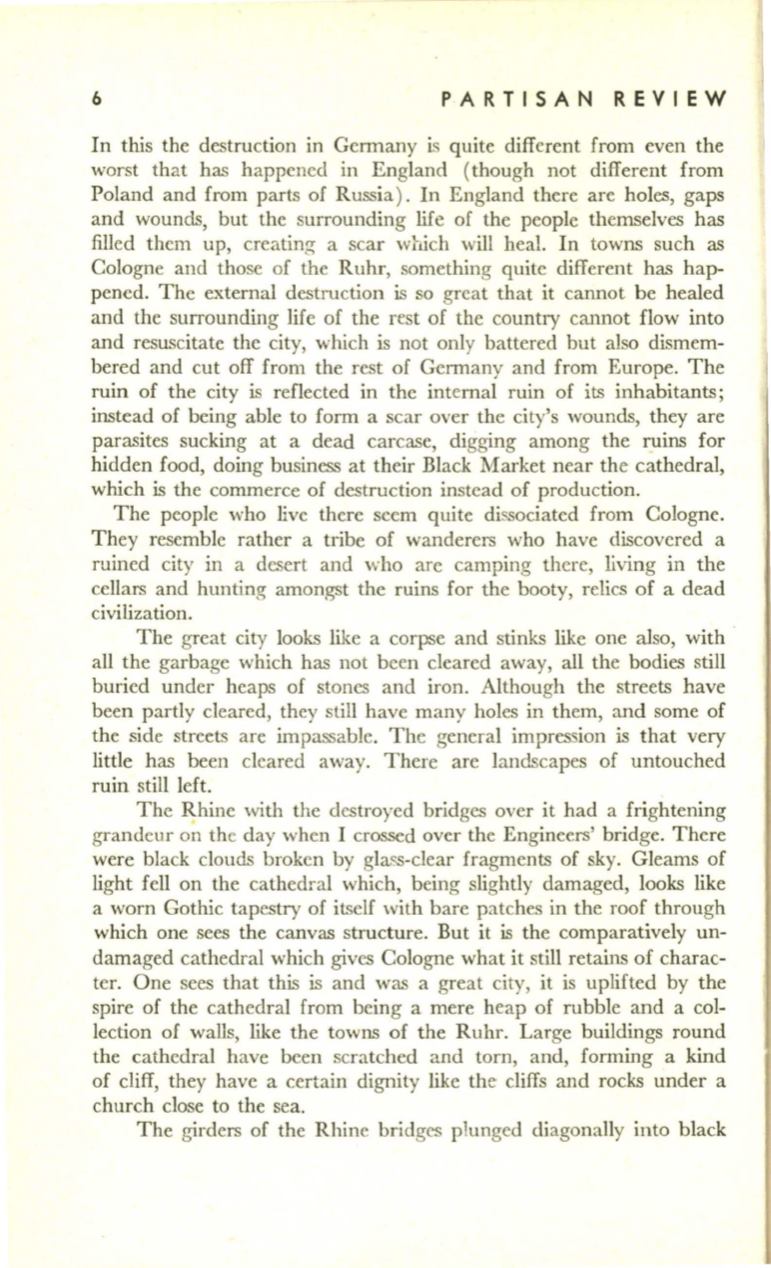
6
PARTISAN REVIEW
In this the destruction in Germany is quite different from even the
worst that has happened in England (though not different from
Poland and from parts of Russia ) . In England there are holes, gaps
and wounds, but the surrounding life of the people themselves has
filled them up, creating a scar which will heal. In towns such as
Cologne and those of the Ruhr, something quite different has hap–
pened. The external destruction is so great that it cannot be healed
and the surrounding life of the rest of the country cannot flow into
and resuscitate the city, which is not only battered but also dismem–
bered and cut off from the rest of Germany and from Europe. The
ruin of the city
is
reflected in the internal ruin of its inhabitants;
instead of being able to form a scar over the city's wounds, they are
parasites sucking at a dead cm·case, digging among the ruins for
hidden food, doing business at their Black Market near the cathedral,
which is the commerce of destruction instead of production.
The people who live there seem quite dissociated from Cologne.
They resemble rather a tribe of wanderers who have discovered a
ruined city in a desert and who are camping there, living in the
cellars and hunting amongst the ruins for the booty, relics of a dead
civilization.
The great city looks like a corpse and stinks like one also, with ·
all the garbage which has not been cleared away, all the bodies still
buried under heaps of stones and iron. Although the streets have
been partly cleared, they still have many holes in them, and some of
the side streets are impassable. The general impression is that very
little has been cleared away. There are landscapes of untouched
ruin still left.
The Rhine with the destroyed bridges over it had a frightening
grandeur on the day when I crossed over the Engineers' bridge. There
were black clouds broken by gla..<:S-clear fragments of sky. Gleams of
light fell on the cathedral which, being slightly damaged, looks like
a worn Gothic tapestry of itself with bare patches in the roof through
which one sees the canvas structure. But it is the comparatively un–
damaged cathedral which gives Cologne what it still retains of charac–
ter. One sees that this is and was a great city, it is uplifted by the
spire of the cathedral from being a mere heap of rubble and a col–
lection of walls, like the towns of the Ruhr. Large buildings round
the cathedral have been scratched and torn, and, forming a kind
of cliff, they have a certain dignity like the cliffs and rocks under a
church close to the sea.
The girders of the Rhine bridges plunged diagonally into black


